Welcome to the all-inclusive square knot guide. You’ll find out exactly what it is, how to tie it, when you don’t want to use it, and when you do want to use it, as well as some other nuances you may not have thought of. Let’s get started.
What Is the Square Knot?
The Square Knot, otherwise known as the Reef Knot, is a binding knot and is foundational to many different types of knots. Its form is described as two interlocking loops with parallel lines.
Being extremely comfortable with the square knot will come in handy thousands of times in your life and will come in handy as you learn other types of knots.
By the way, as an Amazon Associate, I earn when buying qualified products through links on my site.
Is the Square Knot The Same As a Double Knot?
A double knot is not the same as a square knot. A double knot is any knot that adds security with an additional wrap or wind.
Many of us are accustomed to using a square knot with two bights (loops) to tie our shoes. When you “double-tie” your shoes, you are essentially putting another square knot on top of the existing square knot.
How To Tie A Square Knot
If you prefer to watch a video, check this out. If you’d like to read along, I’ll share picture-by-picture instructions as an alternative.
Video Instructions:
How To Tie The Square Knot Picture Instructions:
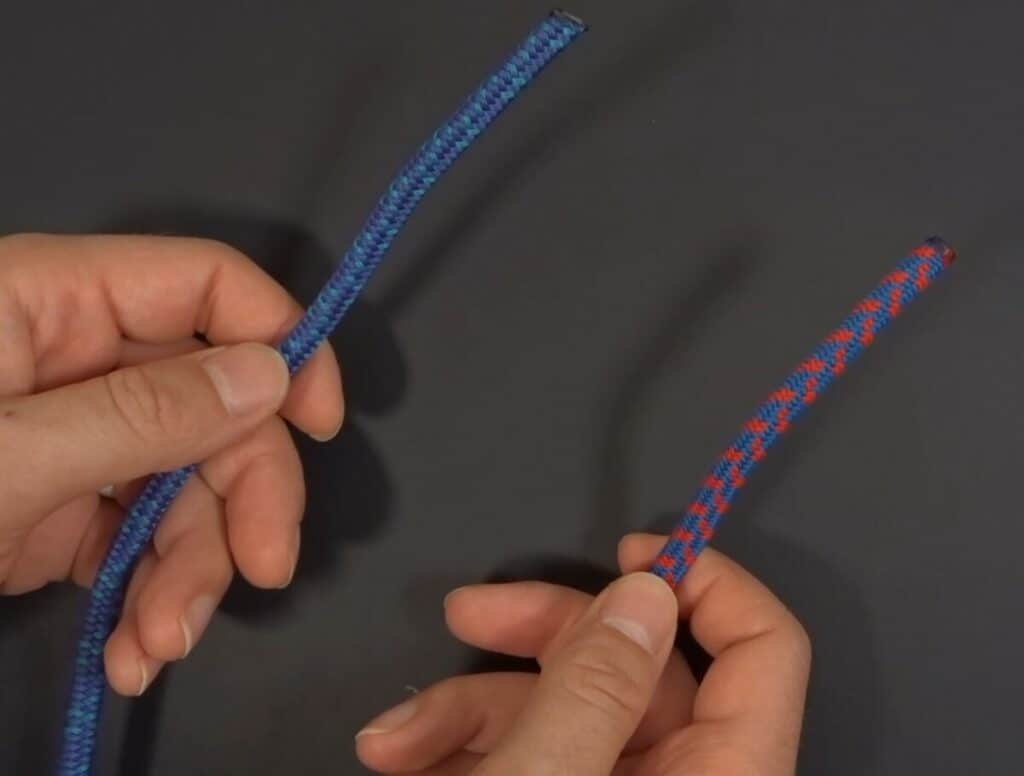
Step 1: Take two ends of a rope and put them parallel (my pictures show two different ropes to make it easy to follow)
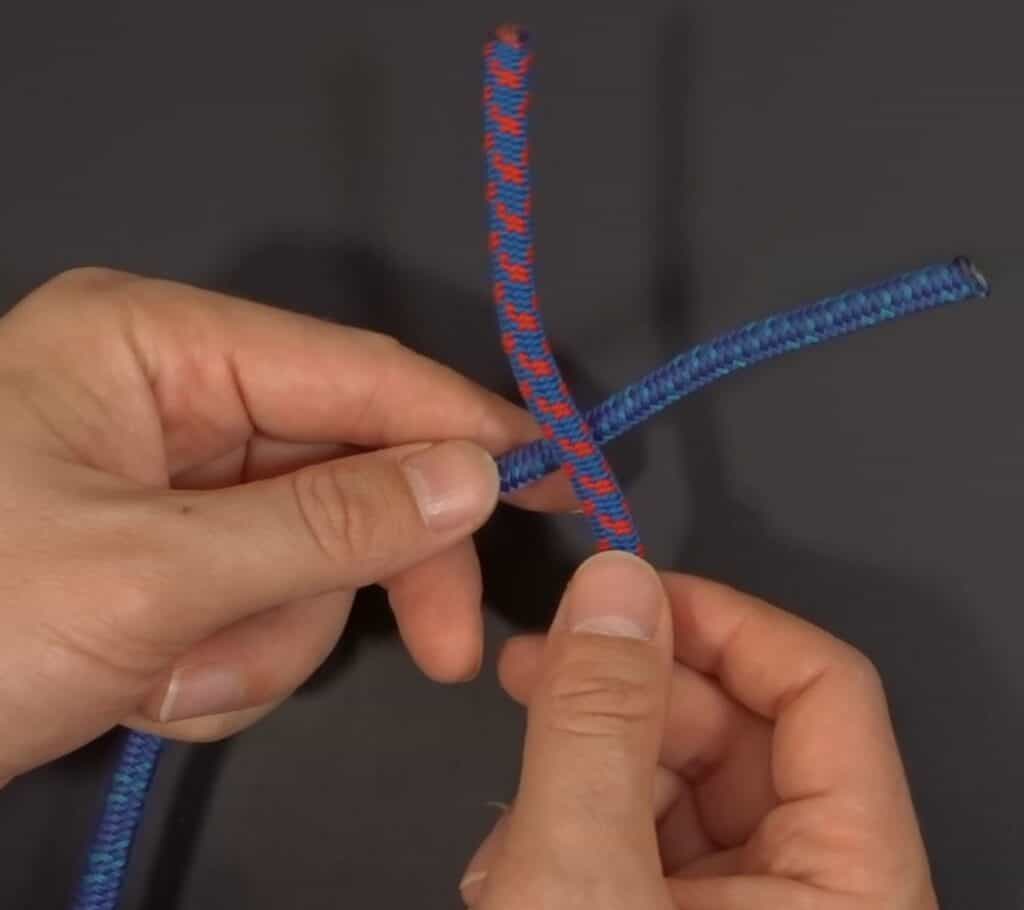
Step 2: Place the right end of the rope over the left end of the rope, forming an X
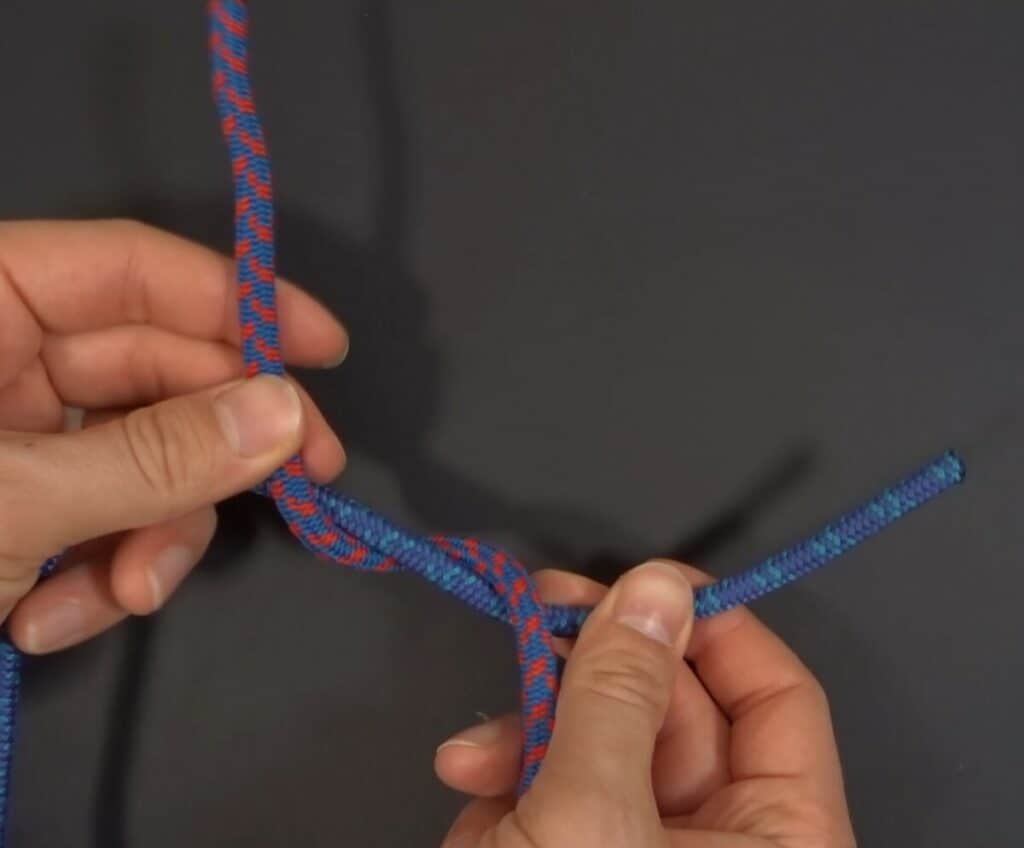
Step 3: Wrap the right end (which is now the left end) of the rope over and around the left end of the rope
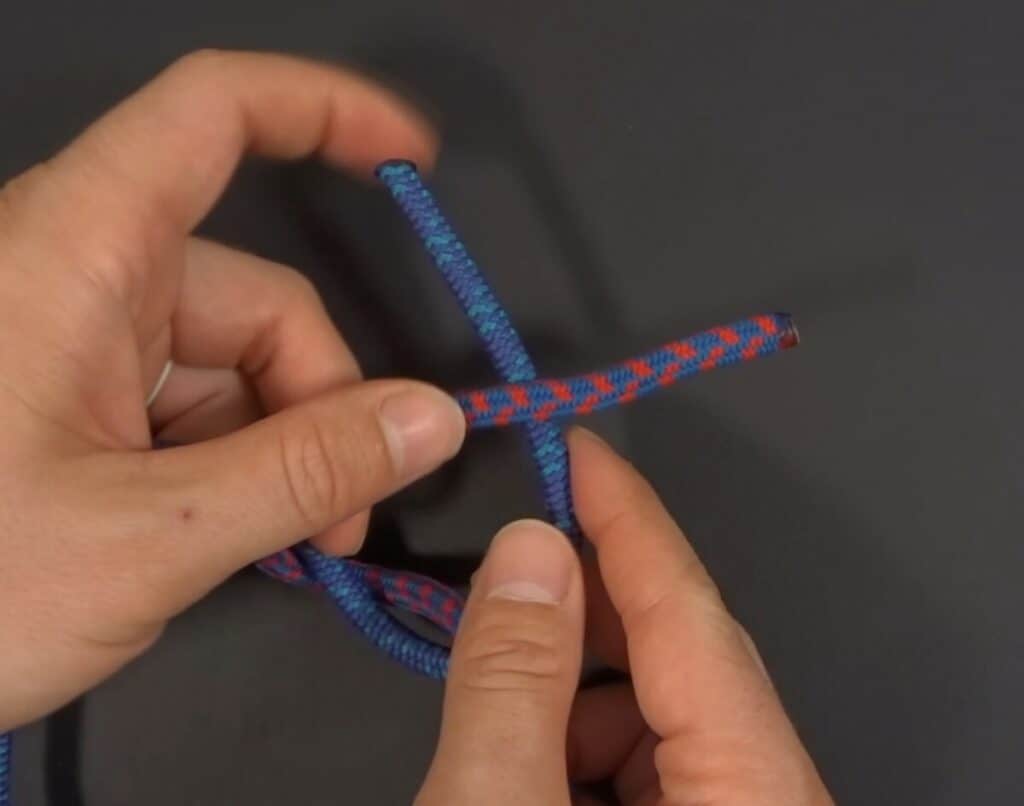
Step 4: Place the left end of the rope over the right end of the rope forming another X
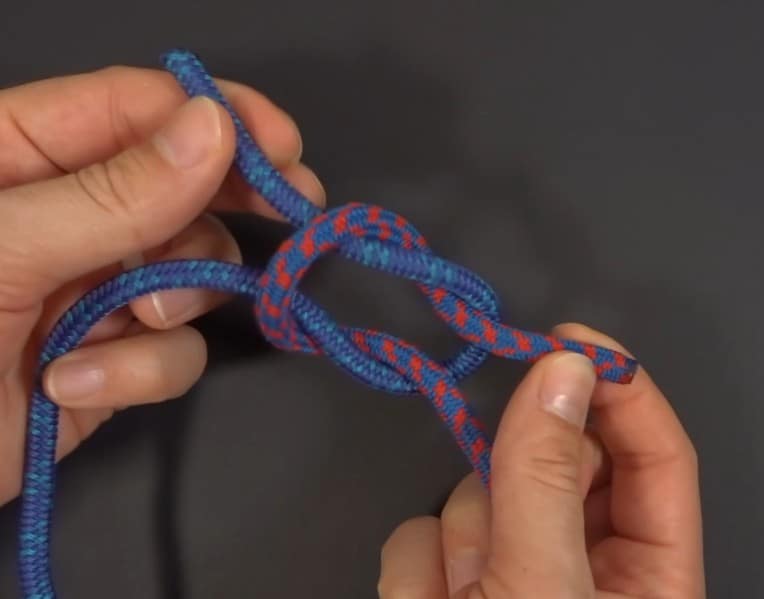
Step 5: Wrap the right end (now the left end) of the rope over and under the left (now the right) end of the rope
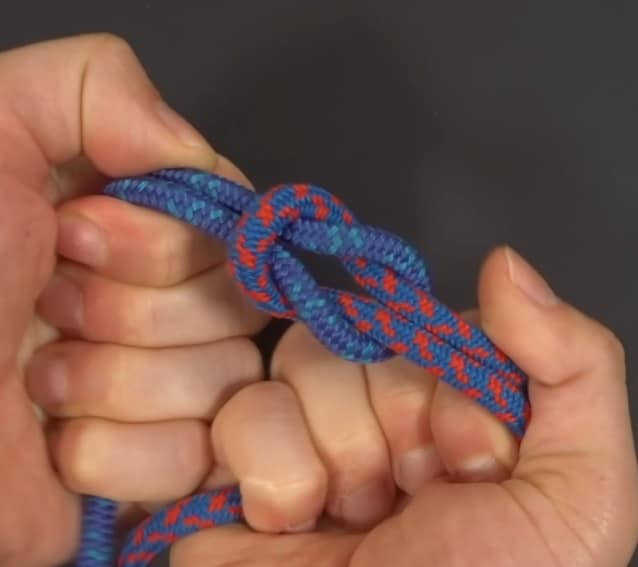
Step 6: Pull the knot tight by pulling the two ends as well as the 2 standing parts of the rope.
You’ll know you did this right if you have two interlocking loops with all lines parallel.
Are you tired of not knowing which knot to use and when? Check out my free 5-day knot course! You will learn 1 essential knot per day with detailed video and picture instructions. And you’ll get it in your email! Check it out here.

Is a Square Knot Only Left Over Right?
For a square knot, you can either start with left over right, or it can start with right over left as long as you alternate the next time you cross the ropes.
So, in step 2, if you make the 1st X with left over right, then in step 4 you would cross right over left. Similarly, if you started with right over left in step 2, you would go left over right in step 4.
Are Square Knots Secure?
Square knots are not considered very secure. From my own testing, if you pull one of the strands instead of all the strands it’s possible to make the knot slip out. This is especially true if you are tying with stiff rope.
Furthermore, if you pull apart the loose working end and the standing part on the same side of the rope this breaks the knot easily, allowing you to pull it free. If you have any situation that might be moving the square knot around, this can easily work out the knot.
Let me reiterate, the square knot, by itself, is not a secure knot and should not be relied on for any critical situation.
You can always make the square knot more secure by tying a half hitch with the remaining working end.
What Is the Most Secure Knot?
There are many more secure knots–in my opinion, the Flemish Bend or the other figure of 8 knots is much more secure, in addition to one of my favorites: the Carrick Bend.
You can see more details on what I think are the most secure knots by checking out my post here on the subject.
How To Untie a Square Knot
Step 1. take two opposite ends of one side of the square knot and pull both ends (see the picture). The back should break and the knot should pop and collapse.
Step 2. Pull the standing part to release the working end.
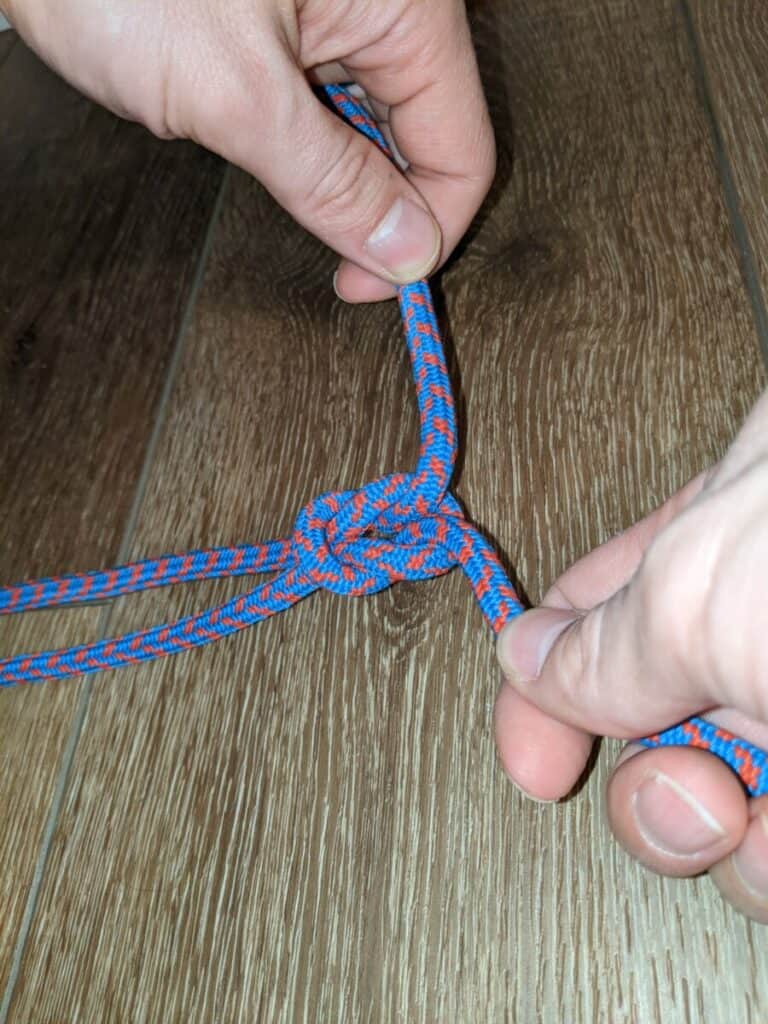

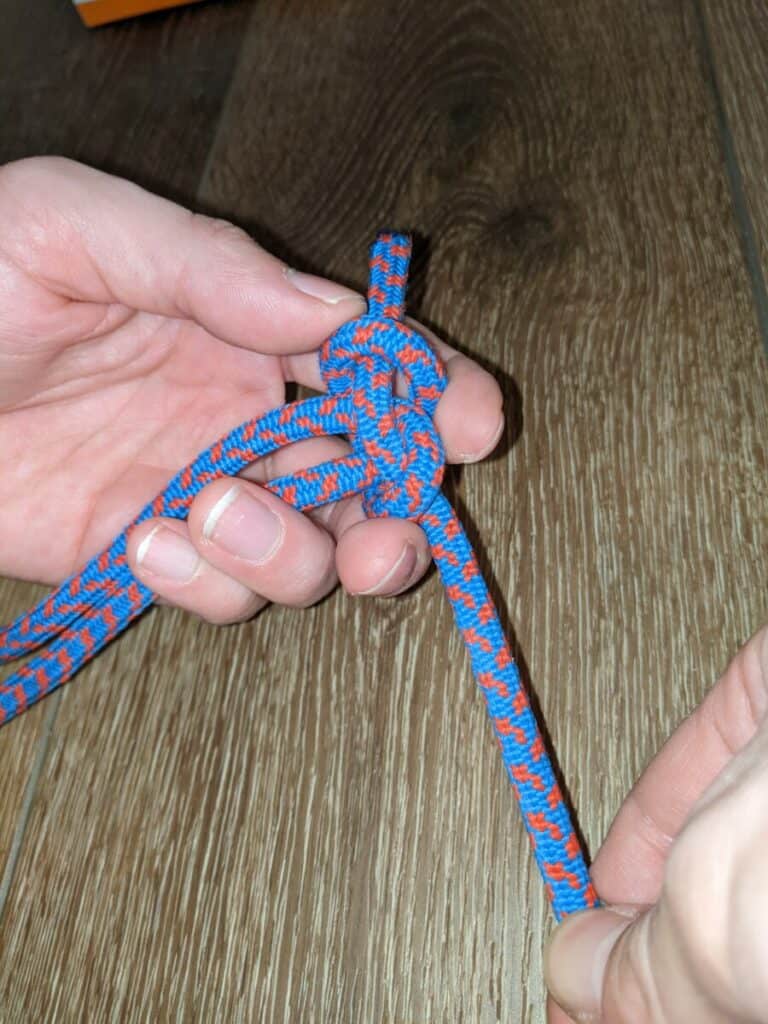

What Is a Square Knot Good For?
A square knot is fantastic for any situation where you need to quickly secure a bundle. Here are a few examples:
- Tying your shoes: This is perhaps one of the most popular uses of the square knot. You can use a square knot with two bights, and this will give you a secure quick release. This is how I tie my shoes and if done properly doesn’t come undone.
- Securing a bundle: Let’s say you are carrying a bunch of poles, tools, pipes, or even blankets–the square knot can make it easy to secure a bundle so it doesn’t jostle and spill out all over the place.
- Keeping a bundle of rope from uncoiling: This is really a more specific version of the previous use, but I like being able to secure a bundle of rope. When I coil up 30-50ft of paracord, it’s nice to be able to secure the rope with a square knot so that all my hard work doesn’t unravel.
Besides all of these examples, the square knot just comes in handy a million times over in so many circumstances. In non-critical situations, the square knot will work in a pinch as a bend (a knot that ties two ropes together). It’s worth it to learn how to tie it so you can do it without thinking.
If you want to see more examples of how a square knot can be useful as well as pictures of different examples, make sure and check out my article here about that subject.
What’s the Difference Between A Square Knot And A Granny Knot?
The square knot is fairly easy, but it actually be easy to mess up if you don’t have the pattern down.
A granny knot is really just a messed up square knot.
The typical pattern for a square knot is right over left, and then left over right (or left over right, and then right over left), but a granny knot can happen if you go right over left, and then go right over left, again, when you pull the knot tight, you’ll get a granny knot.
You can know that you have a granny knot if you pull the knot tight and you have two lines that are perpendicular instead of all lines parallel. See the picture for an example:
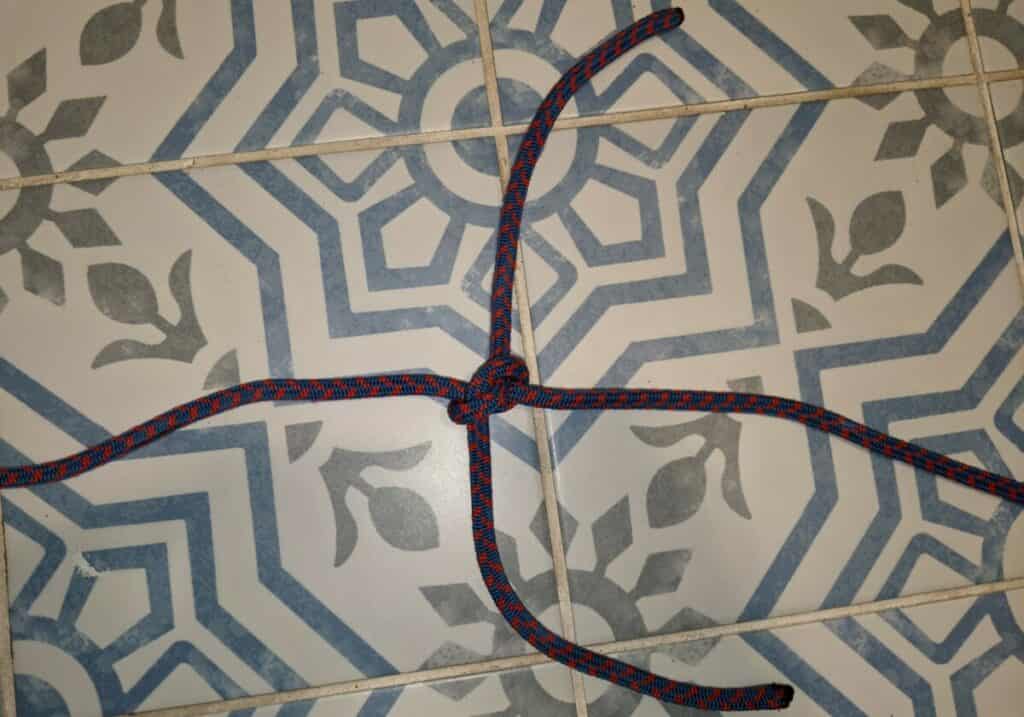
The granny knot is a much less secure knot and should be avoided.
Square Knot In Sutures
The square knot is also used in sutures, whether the tie off knot itself, or as a foundation knot for other knots like the surgeon’s knot (which is very similar to the square knot).
You can see how they twist the line and pull it through multiple times to tie off the knot. If you watch more videos you’ll see the square knot as a foundation in many different variations.
Is The Square Knot Good For Tying Two Ropes Together?
The square knot is not an ideal knot for tying two ropes together. (By the way, the type of knot that is used to tie two ropes together is called a “bend”)
The square knot can slip when a lot of force is applied on one of the parallel lines. For this reason, you should use other bends.
My favorite bends are the double fisherman’s knot, the Carrick bend, and the double sheet bend. You can read about some of the most secure bends in my post about, here.
What Is the Strongest Knot?
If you’re looking to tie something off and you don’t want it to come undone, the square knot definitely is not the best option. The strongest knots are actually no knots at all! Since all knots weaken the rope’s strength.
Climbers use Rethreaded Figure-Of-Eight knots and fishermen choose the Bimini Twist as some of the strongest knots.
To see more detail on what are some of the strongest knots, check out our article, here.
